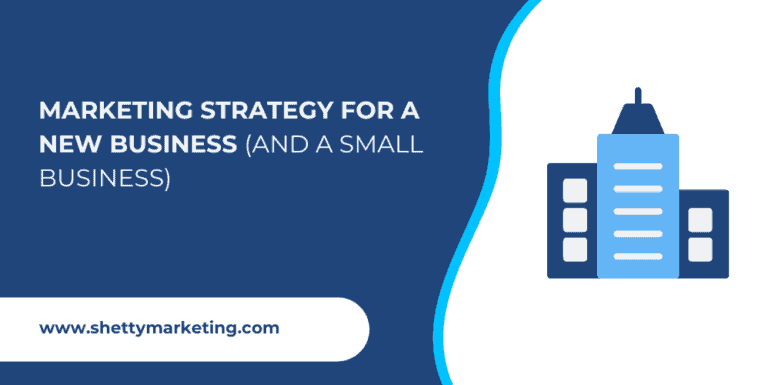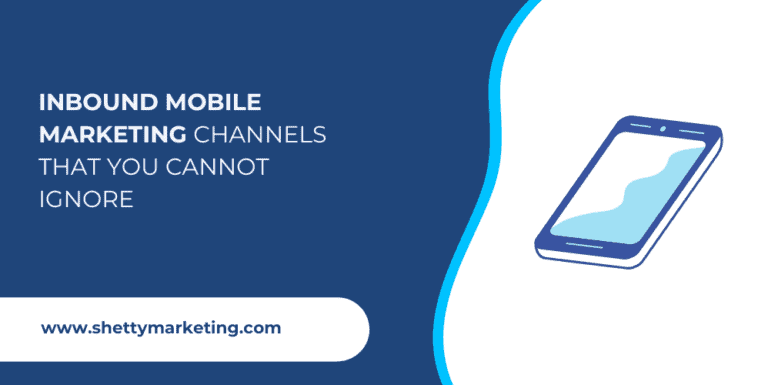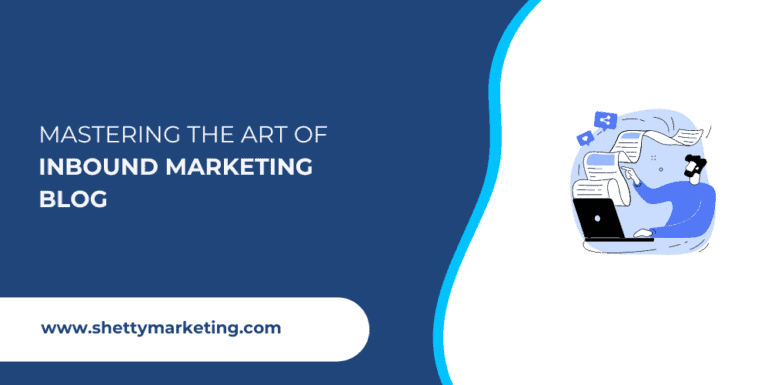I have seen many new small businesses fail even after having a robust product or service.
Reason?
They enter the market without any marketing plan or strategy in place.
A good marketing strategy can help you reach out to your target market and catapult sales in no time.
In this blog, I’ll share some effective techniques I have learned in my career as a marketer. So, let’s jump straight in.
Small Business Marketing 101 – Brand Identity
Okay, so here’s the deal – before you start marketing your small business, you need to lay down a solid foundation.
This means having a strong brand identity.
As a small business owner, you might think this is not essential. But trust me! Brand identity is what adds life to your business.
Your brand identity is how you want your brand to be perceived by your customers. It includes everything from your brand personality to your brand story and messaging.
Give this a lot of thought.
Your message, visuals, and tone in social media posts and web pages should encapsulate the emotions you want your target market to experience.
Check out these Canva brand templates to get an idea of the aspects utilized by certain businesses in specific industries.
Once you figure out the message, visuals, and tone, focus on building a branding kit.

A branding kit is a collection of visual assets that help establish your brand’s identity. Think logos, colors, fonts, and imagery.
Canva helps you create a branding kit that can be useful when creating posts on social media platforms and other marketing initiatives.
Attract customers through the right online marketing platforms
If you’re looking to attract more customers to your business, then you need to focus on two things: visibility and value.
Let me break it down for you.
First off, you want to make sure that your brand is visible to the right potential customers. This means having a presence on marketing channels that your target customers frequently visit.
But how do you know which platforms they frequent?
If you are ready to invest in research, you can use Buzzsumo to find the most trending social media posts related to a topic.

This will provide you with information about the platforms that your target market often visits and interacts with.
After you’ve figured out the platforms they like to use, it’s time to provide something of value to your potential customers via social media marketing.
You need to think about what sets your business apart from the competition. What do you have to offer that’s unique?
One effective strategy is to offer low-ticket offers such as an ultimate guide or whitepapers.
These resources can provide valuable information to your potential customers while also showcasing your expertise in your industry.
After some nurturing, try promoting a high-ticket offer such as a webinar or a free demo.
If you are new to the concept of lead generation, you might want to give this blog post a read.
Related: How are leads generated (Leverage the power of lead magnets)
As someone who works in B2B inbound marketing, I can tell you these two aspects can either make or break your business.
So, don’t just focus on attracting customers – make sure you’re providing them with something of value that will keep them coming back for more.
Buy email lists for email marketing (One of the most underrated marketing strategies)
Email marketing is a tried and tested method that can yield great results – if done right.
One of the biggest mistakes that business owners make is scraping emails from random sites and hoping for the best.
It’s a tempting prospect – after all, you could potentially reach a lot of people and convert them into paying customers.
But the reality is, that most of these emails are not even real.
Trying to market to a bunch of non-existent or non-responsive email addresses is a waste of time and effort.
Here’s where email validation comes in. Simply put, email validation is the process of verifying the accuracy and validity of an email address. It helps ensure that the emails you send make it to real people who are interested in what you have to offer.
You can use an email validation tool such as Zerobounce to validate your list.
However, they can be expensive and time-consuming to set up and maintain.
If email validation is a bit of a hassle for you, there’s another alternative.
Buying email lists from legit sites is one effective solution. This way, you can be sure that the email addresses you’re getting are legitimate, and have been pre-validated by the seller.
Some of the sites through which you can buy lists are Zoominfo, LeadIQ, Apollo, and Clearbit.
Another alternative?
You can hire lead generation specialists on Upwork who have access to such marketing software. They can give you a list of potential customers you can target for a reasonable price.
Of course, you still need to do your due diligence and research the seller to make sure they’re a legitimate source of email lists.
But in general, buying email lists from reliable vendors can save you time, effort, and headaches in the long run.
In conclusion, if you’re serious about email marketing, make sure to prioritize email validation and consider buying email lists from reputable sources. Doing so can help you increase your customer base and boost your bottom line.
Learn more: Generate Leads for your Business: 3-Step Lead Gen Process
2. Content marketing using bottom-of-the-funnel content
There are a lot of things to consider when marketing your business, but one of the most important is your content marketing strategy.
In particular, using bottom-of-the-funnel content can be the key to closing sales and making your business more successful.
At its core, bottom-of-the-funnel content is designed to close deals with potential customers who are close to making a purchase.
This type of content can come in many forms, such as product demos, case studies, and customer success stories. The idea is to provide potential customers with the information they need to make a purchasing decision.

To make this type of content as effective as possible, it’s important to personalize it as much as possible.
You want to address the specific concerns and objections that potential customers might have, so make sure you have a good understanding of your target audience.
3. SEO for bottom-of-the-funnel content
So, when it comes to search engine optimization for bottom-of-the-funnel content, the goal is to target keywords that are closely related to the product or service being offered and have a high purchase intent.
This type of content is designed to convert potential customers who are already in the decision-making stage and are actively looking for a solution to their problem.
For instance, let’s say a SaaS company is offering project management software. They would want to target BOTF keywords such as “best project management software” or “project management software for teams”.

The content created should provide detailed information about the product, its features, benefits, and how it addresses the customer’s pain points.
The aim is to persuade the customer to take a specific action, such as signing up for a trial or purchasing the product.
In the case of Geekbot, they found that BOTF content had a much higher conversion rate (25x higher) than top-of-the-funnel (TOF) content, despite receiving less organic traffic.
Although not every company will have an equal amount of BOTF keywords to target, it’s still essential to prioritize this type of content for faster lead generation.
To create a successful SEO strategy for BOTF content, it’s crucial to identify and focus on the keywords that have high purchase intent, create high-quality content that provides value and convinces the customer to take action, and keep track of conversions rather than just traffic to measure the ROI.
Learn more: Does Search Engine Optimization Work
4. Adding Interactive elements on the landing page
Interactive elements such as quizzes, polls, and calculators help create a personalized experience for site visitors, making them feel more engaged with your brand. By providing a fun and interactive way for visitors to engage with your site, they are more likely to stick around and ultimately convert into paying customers.
To add these interactive elements, you can use various marketing tools such as Leadformly, Typeform, or Survey Monkey. These tools offer a simple and user-friendly way to add these elements to your landing page, so no coding experience is required.
Keeping your interactive elements relevant to your product or service is important. This means that you should only attract potential customers and eliminate visitors who are not interested in your product or service.
Once you have added your interactive elements, you should test them to determine the best placement on your landing page.
Testing also helps you to find out which interactive element works best for your landing page and audience. By testing, you can achieve the best possible results to increase engagement and improve conversion rates.
By adding these interactive elements to your landing page, you can create a personalized experience for site visitors and increase engagement. Use tools like Leadformly, Typeform, or Survey Monkey and keep the elements relevant to your product or service.
Test your interactive elements to ensure they are correctly placed on your landing page and determine what works best. With these strategies, you can achieve a higher conversion rate and ultimately grow your business.
5. Position yourself as a thought leader on LinkedIn and Twitter
Why is thought leadership important?
When you establish yourself as a thought leader, people look to you for insight into industry news and trends. This makes you the go-to person for information, which can help establish credibility and trust with potential clients.
So, how do you become a thought leader on LinkedIn and Twitter?
First things first, let’s focus on your personal social media profiles. While your company page is important, your personal profile has more reach because people connect with people rather than brands. So, make sure your personal profile reflects your expertise and knowledge in your industry.
Now, the key to becoming a thought leader on social media is to help as many people as possible with your expertise. Share your knowledge in articles, posts, comments, and other forms of content.

This will attract a lot of leads, and users on these platforms will see you as a thought leader in the field.
For example, let’s say you specialize in digital marketing. You can share your thoughts on the latest marketing trends, provide tips and tricks for optimizing marketing campaigns, or share success stories from your own experience.
As you gain more followers, it’s important to provide a lead magnet and build your list to market to. This could be an ebook, a white paper, or a guide related to your industry. By providing your followers with valuable content, you can establish trust with them and build your list of potential clients.
Refer to my blog on creating B2B marketing plans to learn the right marketing approach.
BONUS TIP: Use AI to your advantage
AI technology is taking the world by storm, and it’s time for small businesses to leverage it to their advantage.
As a business owner, you have a lot on your plate, and sometimes, it can be overwhelming to manage all aspects of your marketing campaigns on your own. But with the help of AI technology, you can remain efficient, even with limited budgets.
One example of an AI tool that can help you streamline your marketing efforts is ChatGPT. This tool is an AI language model that can write quick social media copies, email copies, and even blog posts for you. Say goodbye to the hassle of brainstorming creative writing ideas and wasting precious hours crafting the perfect copy.
Related : How AI is used in marketing (Will it replace marketers?)
With ChatGPT, you can input prompts related to your product or service, and it will generate coherent and engaging content in no time. This could be a massive help if you’re running a small business with limited resources and find it challenging to keep up with the demands of content creation.





